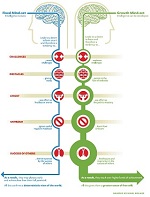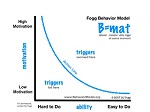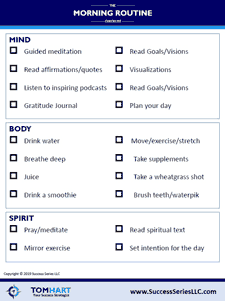 #GrowYourLife #BuildYourBusiness
#GrowYourLife #BuildYourBusiness
Life Area: Personal
Topic: Goals Achievement
 When I was engaged by yoga and athletic apparel company Lululemon to train their Denver area sales people on Goals Achievement I was asked multiple times from the workshop participants, “How can I stay motivated to reach my goals?” We’re all capable of improving, regardless of what natural abilities we were born with or without. It’s important then to acknowledge our successes or failures and remind ourselves that they are a direct result of our own effort or lack thereof, not of factors outside our control.
When I was engaged by yoga and athletic apparel company Lululemon to train their Denver area sales people on Goals Achievement I was asked multiple times from the workshop participants, “How can I stay motivated to reach my goals?” We’re all capable of improving, regardless of what natural abilities we were born with or without. It’s important then to acknowledge our successes or failures and remind ourselves that they are a direct result of our own effort or lack thereof, not of factors outside our control.
It’s the difference between having a “fixed mindset” or a “growth mindset”. Download this FREE infographic – Growth Mindset vs Fixed Mindset – from my FREE Resources page on my website to learn more.
 A “fixed mindset” assumes that our abilities can’t be changed in any meaningful way, and success or failure is the reinforcement of the traits we were “born” with. On the other hand, when we have a “growth mindset,” we see obstacles and challenges as opportunities for growth beyond our existing abilities.
A “fixed mindset” assumes that our abilities can’t be changed in any meaningful way, and success or failure is the reinforcement of the traits we were “born” with. On the other hand, when we have a “growth mindset,” we see obstacles and challenges as opportunities for growth beyond our existing abilities.
These two mindsets spur a great deal of our behavior so it’s essential to recognize if you tend toward a fixed mindset and try to shift your thinking toward a growth mindset.
A growth mindset will keep you trying when you hit obstacles.
When we are hungry, cold, or feel in danger, we have no trouble finding the “motivation” to eat, stay warm, or get somewhere safe. But when comes to everyday situations that don’t hold a life or death outcome, we suddenly find ourselves searching for the “motivation” to make it happen. This happens all too often when it comes to setting and achieving our goals.
Here is this third of a three-part blog Goals Series, I offer up 3 ways to stay motivated to reach your goals:
Maslow’s Hierarchy of Needs
According to Maslow’s Hierarchy of Needs as devised by Abraham Maslow, once basic needs such as food, water, and safety are satisfied, humans are naturally motivated to embark on an ongoing quest to reach our full potential.
So is it really the problem of lack of motivation? Or are we just having trouble following through?
Often the problem is our misguided concept of motivation itself. Read on to learn three ways to think about motivation differently in order to achieve your goals >>>
 Download my FREE 7-Day Goal Setting Challenge – A Guide to Help You Set Your Goals, Create a Plan of Action and Begin Achieving Them IN ONLY A WEEK! I describe it in detail in this Talk with Tom podcast episode on the subject [here].
Download my FREE 7-Day Goal Setting Challenge – A Guide to Help You Set Your Goals, Create a Plan of Action and Begin Achieving Them IN ONLY A WEEK! I describe it in detail in this Talk with Tom podcast episode on the subject [here].
What if you could radically and positively transform your life in EVERY ONE of the 7 Life Areas (Personal, Physical, Professional, Financial, Relational, Spiritual, and Philanthropical)?
That’s right, your relationships, your health, your career, your finances, your fun and leisure, and even your level of contribution to the world? My FREE 7-Day Goal Setting Challenge will help you determine where you are, where you want to be, and what you want, to create the life you want, IN ONLY A WEEK! Download it for FREE [here].
Three Ways To Think About Motivation Differently In Order To Achieve Your Goals
1. You’re motivated but resources are limited
Often in goal setting and achievement the first step is to believe it can be done and then to visualize yourself achieving it. Next, is to make that goal a habit so that it is soon integrated into your everyday living. If you’re thinking seriously about making a behavioral change, lack of motivation isn’t the reason you’re stuck in “trying to get traction” mode. According to Stanford professor and corporate consultant, social scientist BJ Fogg, the problem is more likely related to a lack of “ability.”
No, Fogg is not suggesting you’re incapable of change. Fogg theory is that we all experience, to varying degrees, scarcity in resources such as time, money, and skills, and that scarcity can interfere with our ability to accomplish even what we are plenty motivated to achieve.
 According to Fogg’s behavior model, you have two options: You can try to get more of the resource you’re lacking (easier said than done) or you can scale down the behavior to match the resource you do have (more practical). Want to start meditating but can’t find the 30 minutes to spare? Start with 5 minutes. Want to get fit but have no idea where to start? Hire a coach to set you up with a 10-minute workout plan.
According to Fogg’s behavior model, you have two options: You can try to get more of the resource you’re lacking (easier said than done) or you can scale down the behavior to match the resource you do have (more practical). Want to start meditating but can’t find the 30 minutes to spare? Start with 5 minutes. Want to get fit but have no idea where to start? Hire a coach to set you up with a 10-minute workout plan.
2. Motivation isn’t constant
Motivation waxes and wanes. Be ready with options.
In the throes of inspiration, we often set ambitious schedules that seem entirely doable to our highly motivated selves. I’m going to take four yoga classes a week! Starting today, I’m going to take three deep breaths every time I get mad at my kids!
 But the minute we fail to meet these high expectations, we throw in the towel. Eh, I don’t feel like yoga today, so forget yoga.
But the minute we fail to meet these high expectations, we throw in the towel. Eh, I don’t feel like yoga today, so forget yoga.
What we forget is that motivation isn’t constant. Sometime you’re just not feeling it, so it’s important to build in daily options to harness your “motivation wave,” the daily or even hourly fluctuations in motivation that Dr. Fogg describes.
The idea is to take a more challenging path when you are feeling inspired and an easier route when motivation is waning.
Let’s say your goal is to write a page in your journal every night before bed. You get home late from an event one night and just want to roll into bed — your motivation wave is hitting bottom. Instead of blowing off your new habit completely, make it easier for yourself and just write down one sentence or one thing you’re grateful for.
3. External rewards and fear can motivate. But only temporarily
 Have you ever had a flash of motivation upon learning a sobering new fact? Maybe you were reading this Washington Post article and learned that excessive sitting can lead to diabetes so you suddenly bolt out of your chair every hour. Or your company launches a “biggest loser” competition with cool prizes, so you start skipping meals in an attempt to drop 10 pounds fast.
Have you ever had a flash of motivation upon learning a sobering new fact? Maybe you were reading this Washington Post article and learned that excessive sitting can lead to diabetes so you suddenly bolt out of your chair every hour. Or your company launches a “biggest loser” competition with cool prizes, so you start skipping meals in an attempt to drop 10 pounds fast.
Your mission succeeds … for a few days.
Fact is, change inspired by fear or external rewards never lasts. Of course it’s inspiring to learn new facts or be tempted with a prize. But rather than dwell on the risks of doing the wrong thing, relish the positive experience of doing something new and positive. If you don’t have an intrinsically motivating reason for taking on a new habit you won’t keep it a part of your daily routine for long.
Friend and mentor Michael Hyatt’s wife, Gail Hyatt, puts it this way:
“People lose their way, when they lose their why”.
When your good intentions go up against your preset behavioral patterns – your automatic response mechanism – knowing and remembering what’s really driving you (your “why”) may be all that keeps you on course. With a big enough “why” you will have a big enough motivation.
Please share this post with your family and friends.
My mission is to inspire people and organizations to live their highest vision.
I am a Success Strategist and Master Coach. I provide transformational coaching and training for individuals and organizations to help you Grow Your Life and Build Your Business by getting clear and focused on what you want, why you want it, and how to create it. Learn more about me at SuccessSeriesLLC.com.
There is no better endorsement than that of a friend, so if you like what you’re reading or are using my many FREE resources, tell a friend to join the Tom Hart Success Series Community, to receive email notifications of new blog posts and Talk with Tom podcast episodes, learn of upcoming events, and other news, by visiting my website and clicking on the offer to receive my FREE monthly resource by leaving their email address OR forward this to them and have them simply click here (we respect your privacy and do not tolerate spam and will never sell, rent, lease or give away your information to any third party).


